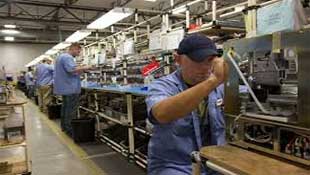| |
|
| |
|
 |
Supply
Chain by the Numbers |
| |
|
| |
- June 18, 2020 -
|
| |
|
| |
|
| |
|
| |
Procurement Compensation Up Modestly in 2019; Rolls Royce Aviation Tells Suppliers to Cut Prices; Walmart Testing Stores with No Cashiers; US Manufacturing Down not Out |
| |
|
| |
| |
| |
| |
$123,226 |
 |
That was the average compensation for procurement professionals in 2019, according to the recently released annual salary report from the Institute for Supply Management, based on a survey earlier this year of 2700+ supply managers. That was up 3.3% from 2018, and includes annual pay and any bonuses or stock options. The numbers look somewhat different when viewed from median (half above, half below) versus average compensation. The median compensation in 2019 increased 3.6% to $106,000 - quite a bit lower than the average of $123,000 - up from $102,352 in 2018. Those at the top do very well, as always. The average compensation for chief procurement officers (CPOs) and EVPs was about $251,000 last year, and $229,000 for regular procurement vice presidents. “Emerging practitioners” pulled in almost $79,000 annually, while managers about averaged over $116,000 and directors about $161,000. However, continuing a trend found from the start of the annual survey, at all levels men make substantially more than women - about $65,000 less at the CPO levels.
|
|
|
| |
| |
|
|
|
That's how many cashiers Walmart will have manning point-of-sales lanes at one of its stores in its headquarters city of Fayetteville, AR, under a test run currently in progress. While cutting costs is certainly a factor in the concept, Walmart says it is an attempt to see if checkout times are faster while limiting human interaction in the age of the coronavirus, in what SCDigest believes will be just one of many moves by companies using the virus threat as the reason for automating. Walmart of course has already been pushing self-checkout in many stores, with just a few checkout lines open much of the time. The program will expand to other stores if the test results are positive. However, Walmart says helpers will be available who will actually scan products for customers if they want at the self-checkout stations. Walmart recently launched a touch-free payment system also aimed at helping mitigate the spread of the coronavirus. |
| |
| |
|
| |
| |
87.2 |
 |
That was the ugly level of the US manufacturing output index for May, in data released this week as every month by the Federal Reserve Bank. That means US manufacturing output was about 13% below baseline 2012 levels – though some pundits thought the number would be worse – and it certainly was much worse in some sectors. The index level was also 16.5% below the level in May 2019, though the number was a bit better than the 84.0 level seen in April. Surprisingly, US factory utilization came in at 75.4%, up nicely from 63.7% in April, and not all that much lower than the long run average of 78.2%. All told, the data show a wounded manufacturing sector for sure, but one perhaps not so weakened that it can't recover quickly if the virus threat is reduced. |
| |
| |
| |
| |
| |
|
|
|
| |
 |
 |
| |
 |
![]() |
 |
|
| |
 |
Feedback |
|
|
|
![]()
|
No Feedback on this article yet.
|
|
![]() |
|
|
|
![]() |
 |
![]() |
 |
|
| |